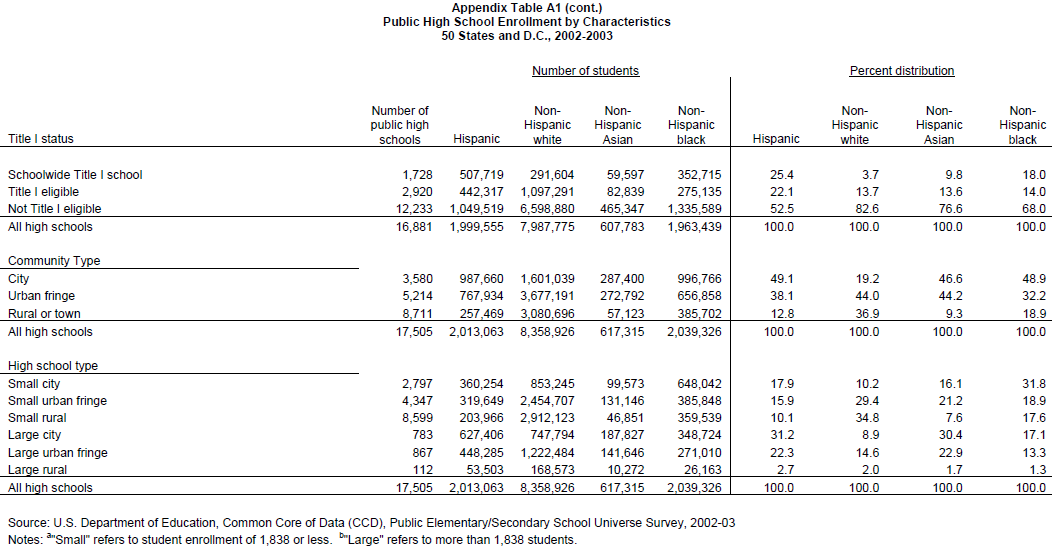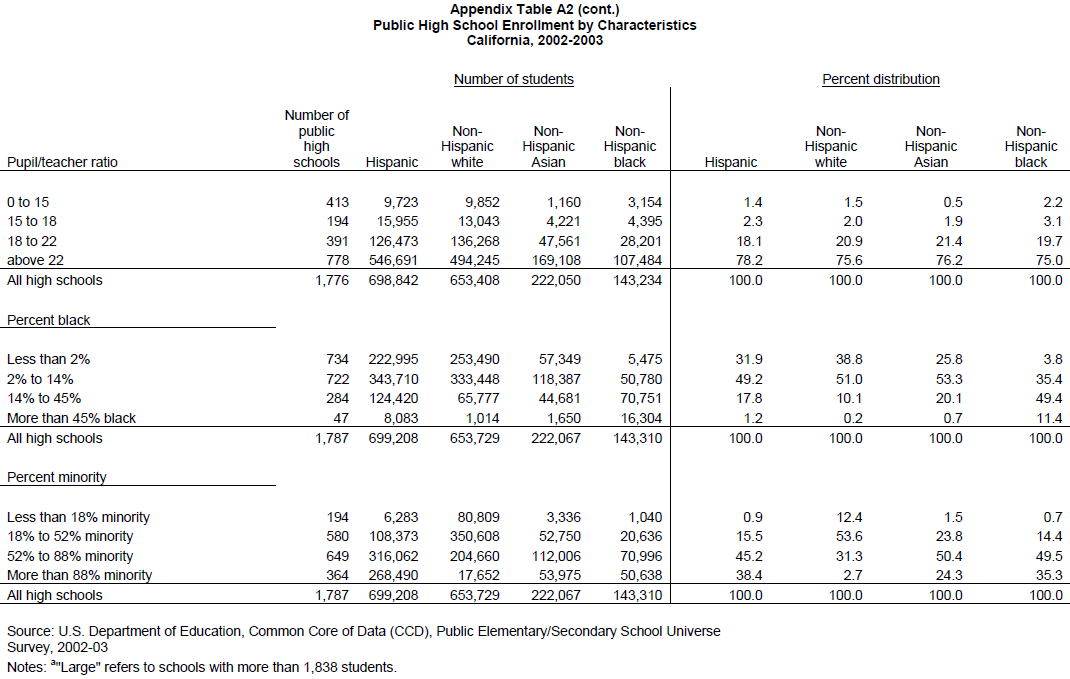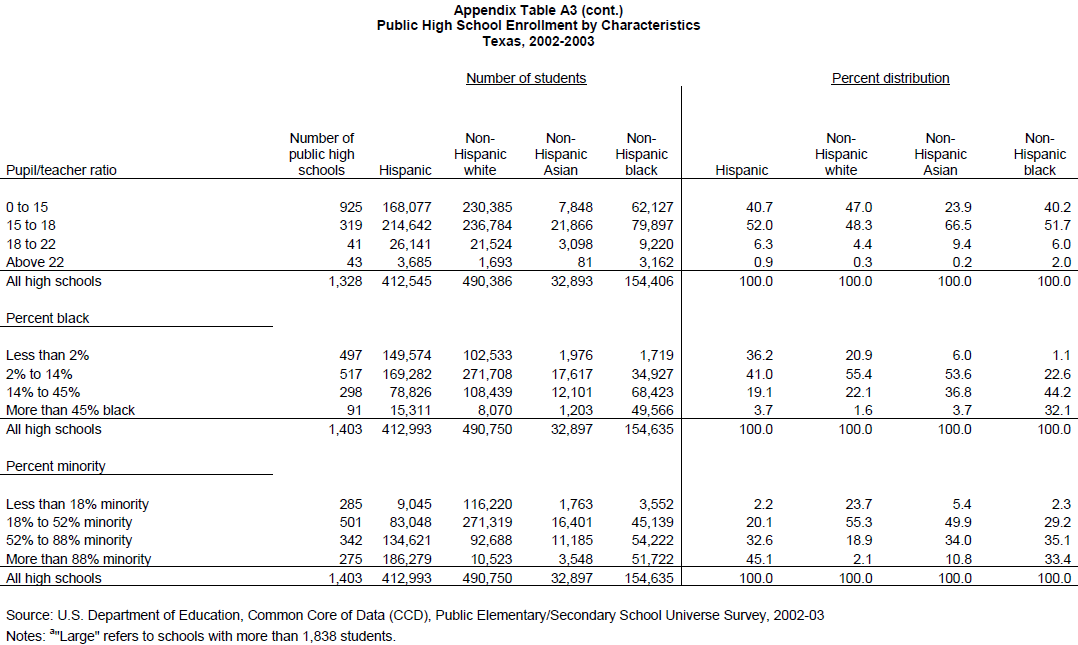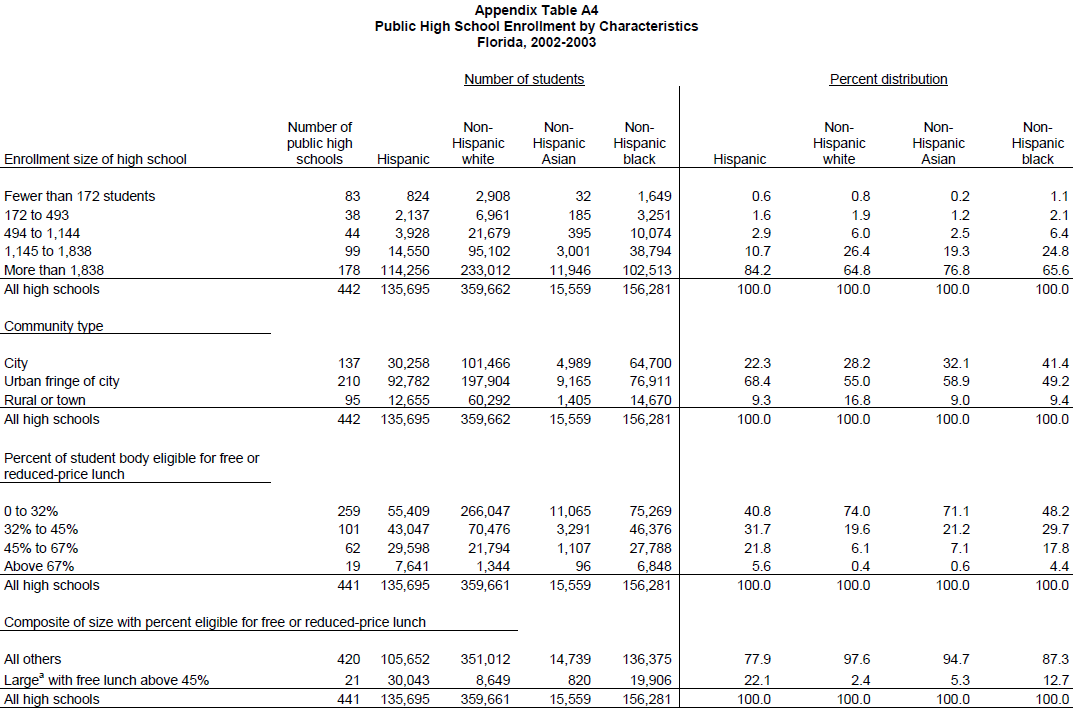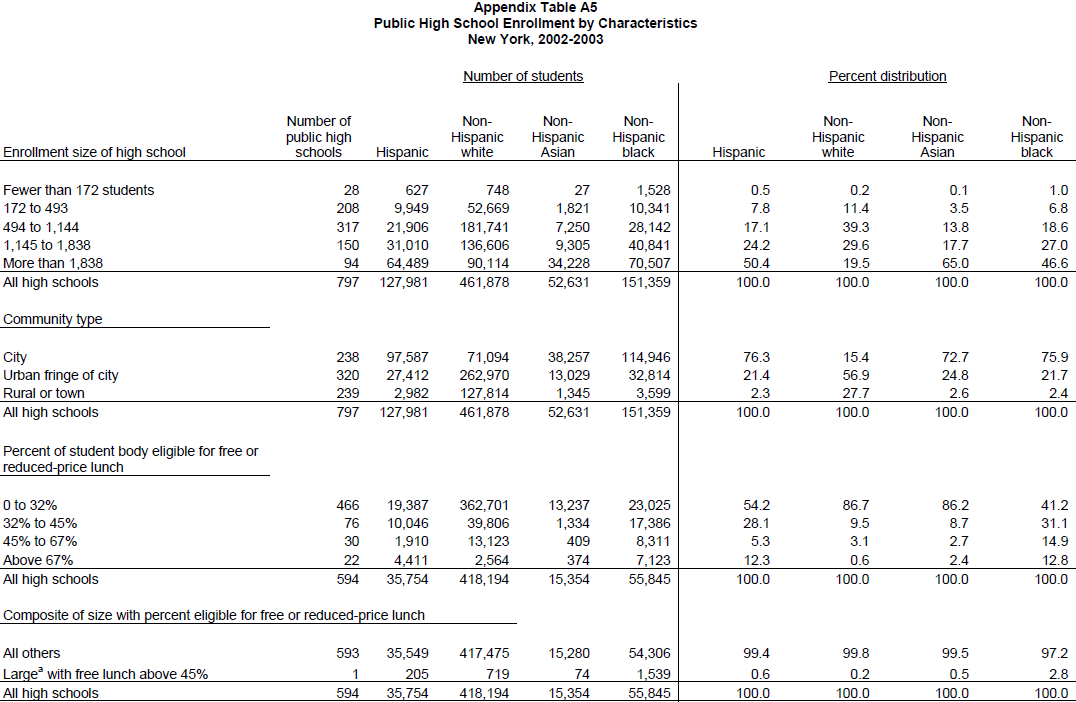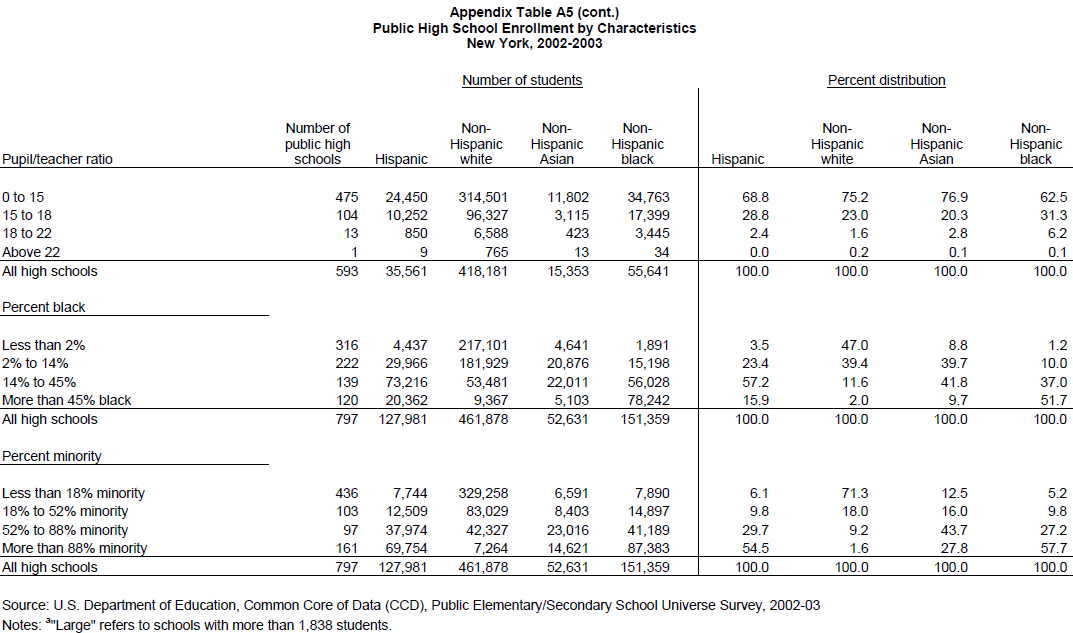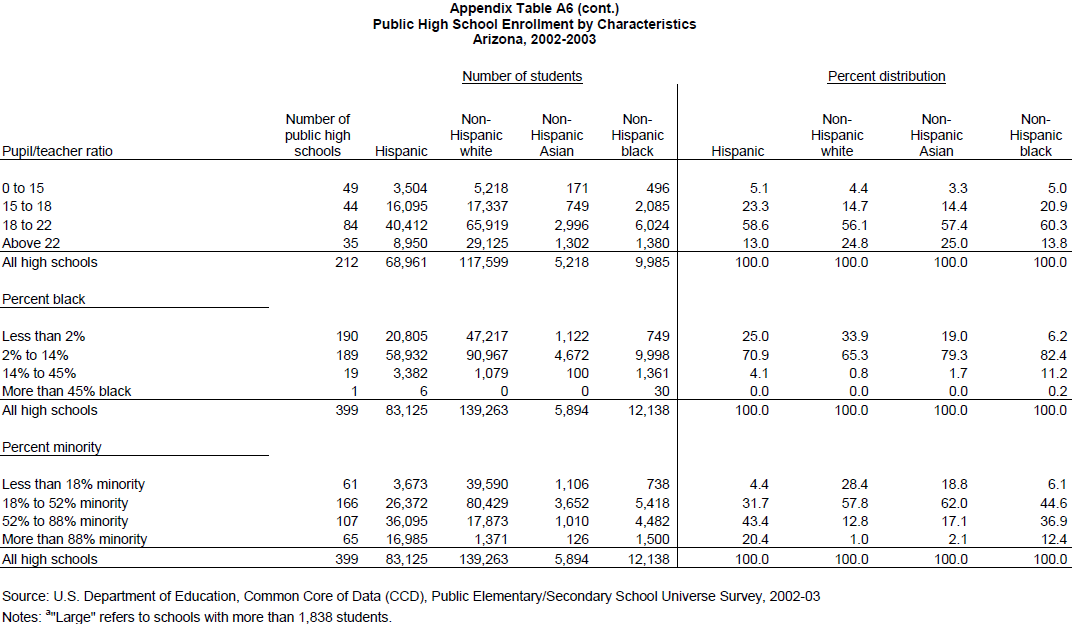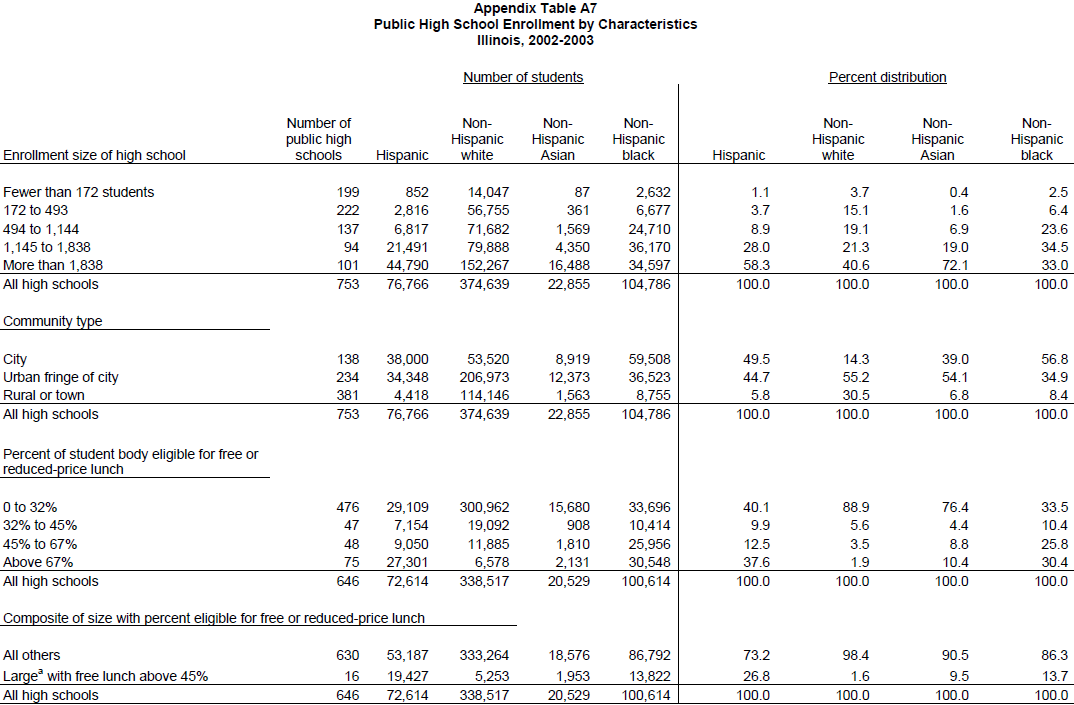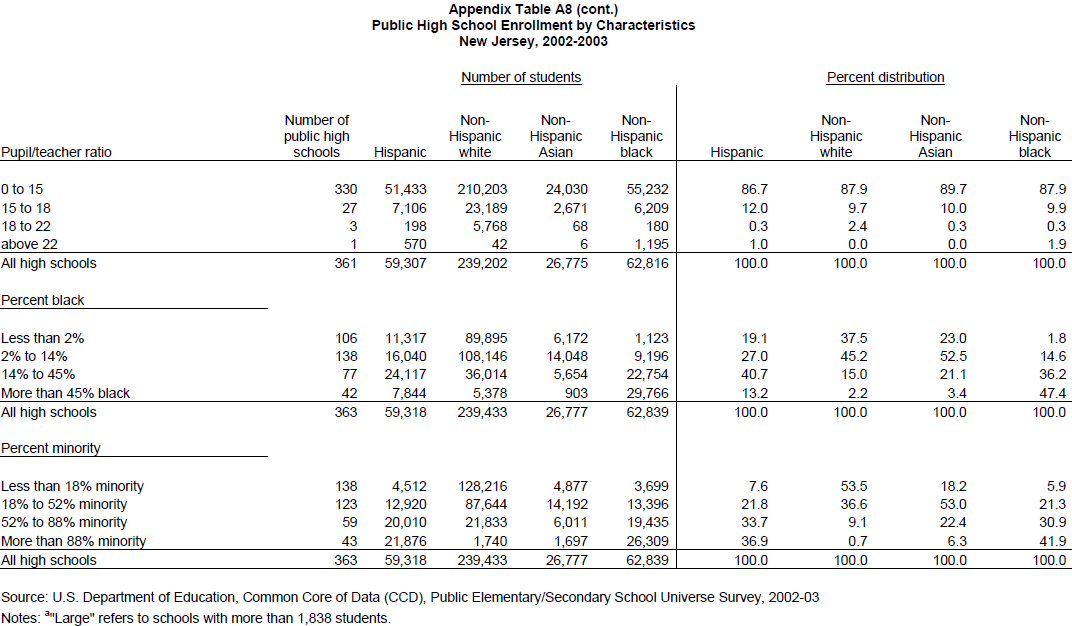The Public Elementary/Secondary School Universe Survey indicates that there were 97,531 public schools in operation in school year 2002-03 in the 50 states and the District of Colombia. Of these public schools, 92,330 schools had students in membership or positive student enrollment. All the tabulations reported herein are limited to high schools that had student membership.
Of the public schools that had membership, about 17,800 are “high schools.” Following U.S. Department of Education definitions, a “high school” is a school that has a lowest grade of enrollment from 7 to 12 and must extend through grade 12 (NCES, 2003c). The analysis in this report is confined to the 17,505 public high schools that reported valid Hispanic and non-Hispanic white student enrollment counts.
The community type designation is based on the NCES locale code. The CCD specifies eight school locales. This analysis collapsed them to three: city, urban fringe and rural or town. “City” refers to the central city of a Core Based Statistical Area (CBSA) or Consolidated Statistical Area (CSA). “Urban fringe” refers to any incorporated place, Census Designated Place, or nonplace territory within a CBSA or CSA and defined as urban by the U.S. Census Bureau. “Rural or town” refers to any other locale and consists of the CCD designated locales “large town,” “small town,” “rural, outside CBSA,” and “rural, inside CBSA.”
Appendix Table A1 provides the levels of public high school enrollment and the percentage distribution by school characteristics for the 50 states and the District of Colombia. Appendix Tables A2 to A8 provide the enrollment levels and percentage distribution for select school characteristics for the seven major Latino states.


